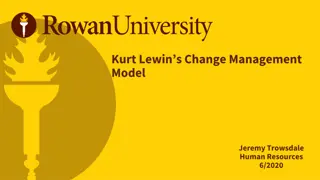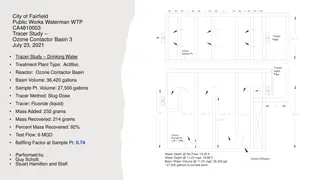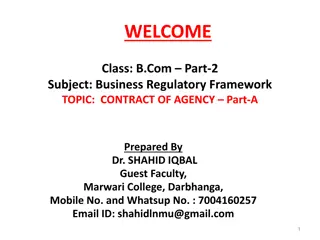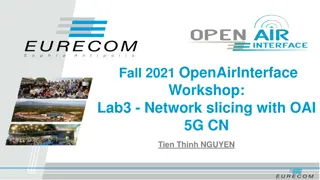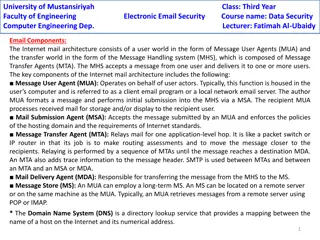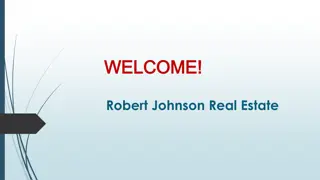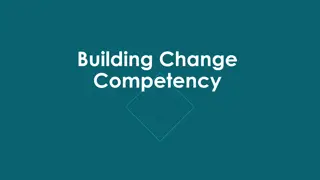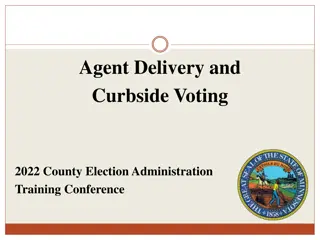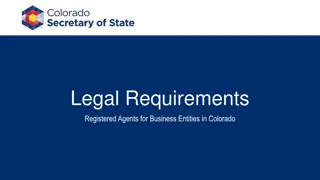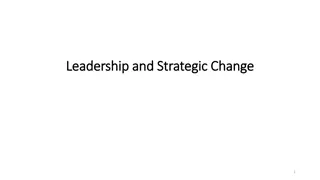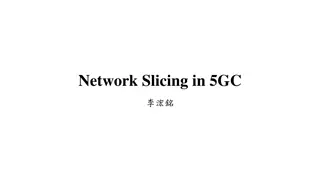
Framework for Establishing a Change Agent Network in Workplace Transformation
"Learn about the importance of Change Agents in workplace modernization programs and how to successfully establish a Change Agent Network. This guide covers the roles, responsibilities, selection process, and support strategies for Change Agents, emphasizing their crucial role in leading employees through organizational change."
Download Presentation

Please find below an Image/Link to download the presentation.
The content on the website is provided AS IS for your information and personal use only. It may not be sold, licensed, or shared on other websites without obtaining consent from the author. If you encounter any issues during the download, it is possible that the publisher has removed the file from their server.
You are allowed to download the files provided on this website for personal or commercial use, subject to the condition that they are used lawfully. All files are the property of their respective owners.
The content on the website is provided AS IS for your information and personal use only. It may not be sold, licensed, or shared on other websites without obtaining consent from the author.
E N D
Presentation Transcript
Establishing a Change Agent Network A framework for Change Managers and Change Agents September 2022 Image result for canada wordmark Image result for canada wordmark
About this Guide A French version of this document is available here : FR version This guide is for Change Managers supporting Workplace Modernization or Workplace Transformation programs. It intends to provide a framework to nominate and support Change Agents. Information in this guide includes: 1. What is a Change Agent and a Change Agent Network? 2. What are the responsibilities of the Change Agents? 3. How to nominate and select Change Agents? 4. Who supports the Change Agents? 5. A timeline for Change Agents 6. Best practices for Change Agents 7. Tools and resources Communications to Change Agents Resources on Change Management* Change Managers should attach the Change Agent Network: A Guide for Change Agents hyperlinked at the end of this guide as part of the invitation to your Change Agent Kick-off Meeting (also attached at the end of this guide). Change managers can present material in the guide to the Change Agent s during the Kick-off meeting. Image result for canada wordmark 2
Change Agent Network For a change initiative to be successful, local-level sponsorship for the change is required. Client Department s are recommended to develop a Change Agent Network, composed of appointed leaders, managers, and representatives within the organization that have the capacity to actively participate in leading employees through the change. Change Agents are early adopters of change those who are excited and optimistic about the change ahead. They represent the interests of their colleagues going through the transition and will work with business leaders and change/project managers to facilitate a successful transition. Image result for canada wordmark 3
A Team Approach to Change Change Agents are experts on the change initiative and therefore, are active members of the integrated project team. Share information about the change Provide the project team with business insights They should be routinely meeting with and engaged by the Change Manager to share information about how the change is being perceived by employees, provide updates on business insights and solicit feedback from their colleagues. Create a positive environment Raise unresolved issues to implement Support onboarding and learning Change Agents may also be responsible for onboarding employees to the change and support learning at a local level (i.e. how to use certain workpoints, virtual collaboration tools, etc.). Reinforce workplace norms and etiquette Project-specific functions of the Change Agents could include supporting during information gathering and move phases of the project lifecycle. As a Change Manager, it is important to consider if these functions will overlap. Cultivate new work habits and attitudes Challenge rumours with facts Image result for canada wordmark 4
Nominating Change Agents Senior Leaders and People Managers can seem like the best candidates for Change Agents because they hold the greatest influence over their direct team; however, these roles may not always have the time to commit to being an active and visible member of the change. In these instances, senior leaders should select group representatives who are knowledgeable in the requirements of the team, well networked and influential among staff and are optimistic about the change. In some projects, Working Group Leads or Move Captains within the integrated project team may atomically roll over into the Change Agent function. When selecting contributors for these roles, it is important to consider how functions may evolve across the project lifecycle. Advocate for innovation: Willing to work with uncertainty Embraces change and describes it as an opportunity, not a threat Results-oriented, problem solver: Persistent when met with frequent resistance Strong business and operational knowledge Has a practical problem-solving approach Characteristics of a Change Agent Credible and leads by example: Asks questions and clarifies facts Has influence and credibility Models new behaviours Strong communicator: Communicates clearly, positively and connects well with others A go to person and opinion leader Image result for canada wordmark 5
The Integrated Project Team Executive Sponsor Project Manager or Integrator Change Manager Decommissioning and Relocation Interior Design Change Agent Network Working Group Leads** Move Captains** Change Agent 1 (Branch 1) Change Agent 2 (Branch 2) Change Agent 3* (Branch 3) *Ideally, each major branch/directorate will have a Change Agent representative, but not required. Some branches/directorates may require more than one Change Agent. **As mentioned previously, some roles may overlap. Working group leads and/or move captains could roll over into Change Agents as they normally have a sound understanding of the change initiative. Image result for canada wordmark 6
When to Engage Change Agents 1 2 3 4 Pre-Approval ~1-2 Months Pre-Planning & Planning ~1-2 Months Implementation ~4-12 Months Post-Occupancy ~3-12 Months Change Agents are not engaged in this phase. Change Agents may act as Working Group Leads and/or People Managers supporting information gathering and design development. Change Agents may support move and relocation efforts prior to construction/furniture installation; however, this is project specific. Change Agents support go- live activities including employee onboarding and training for the change initiative. Nominate and select Change Agents Establish your Change Agent Network. Change Agents are equipped with this package and additional resources. Role model change and reinforce new team norms and etiquette. Change Agent Kick-off Meeting with the Change Manager. Feedback approach is established, which may include weekly roundtables with the Change Manager Support ad hoc post- occupancy engagement activities/information gathering. Image result for canada wordmark 7
Best Practices for Change Agents Advocates Be open to the possibilities and the learning that change provides (the opportunity) Acknowledge that we cannot control the change, but we can control our attitudes and how we respond to change Frame the change as inventing the future instead of redesigning the past Understand that each person experiences change differently (barriers) 1 2 Communicates A Successful Change Agent Explain the business reason for the change and how it will happen Be clear and honest about what s changing and why Provide a channel for feedback and questions (i.e., meetings, etc.) Tell employees how it will impact them When handling resistance, listen, empathize, discover needs and concerns, respond and check for understanding. 3 Participates Ask employees what they need (more information, help, support, etc.) Capture when people are making assumptions and unknowingly producing rumours Investigate reasons for resistance (i.e., lack of understanding, impact on work/mandate, past experiences with change, lack of commitment from leaders, fear of loss, and lacking ability or knowledge for change) Image result for canada wordmark 8




